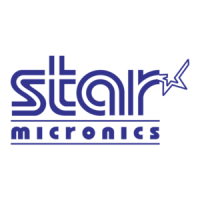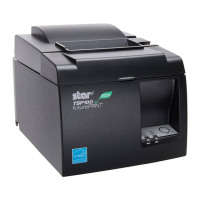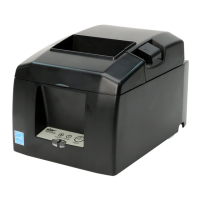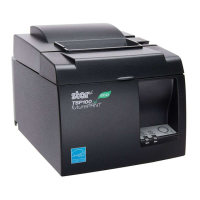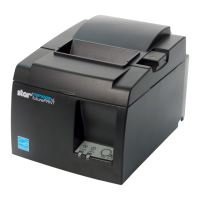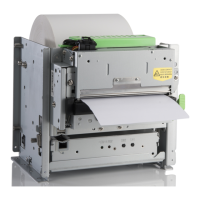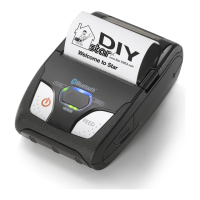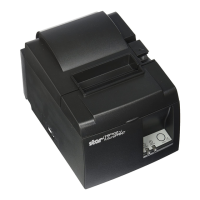– 20 –
THEORY OF OPERATION
2-2-1. Editing
Data stored in the RAM is read out sequentially by the CPU and then edited according to a function code that has been
specified in advance.
This editing takes places until the CR or CR + LF code appears or the line buffer becomes full.
2-2-2. Print Head Driving Circuit
Edited print data is output to terminal Q of LS273 in the gate array through the CPU data bus, as regulated by the issue
timing of a WR signal. However, as for pin 9 (HD9) of the print head, the data is output to the same terminal upon issue
of the next WR signal. When all the data is received for printing, an energized time control signal is output from port PO4
of the CPU. This allows the print data to be output to HD-1 ~ 9 of the gate array. When the print data is HIGH, the transistor
TR9 will be turned ON for 380 µS (Ver 1 and 1.5), 340 µs (Ver 2), energizing the print head solenoid to drive the print
head.
Fig. 2-8 Print Head Driving Circuit
2-2-3. Carriage Motor Driving Circuit
This printer employs a stepping motor as the carriage motor. Unlike regular motors on the market, this stepping motor
will not operate just by connecting it to a power source. The motor operates only when a drive pulse is fed to it, but even
then, it turns only a certain angle.
This stepping motor is characterized by 4-phase stepping. Control of the motor is facilitated by phase 1-2 excitation. The
following is the description of the carriage motor drive circuit and the control signal generated by the phase 1-2 excitation
method.
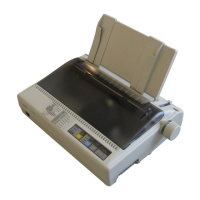
